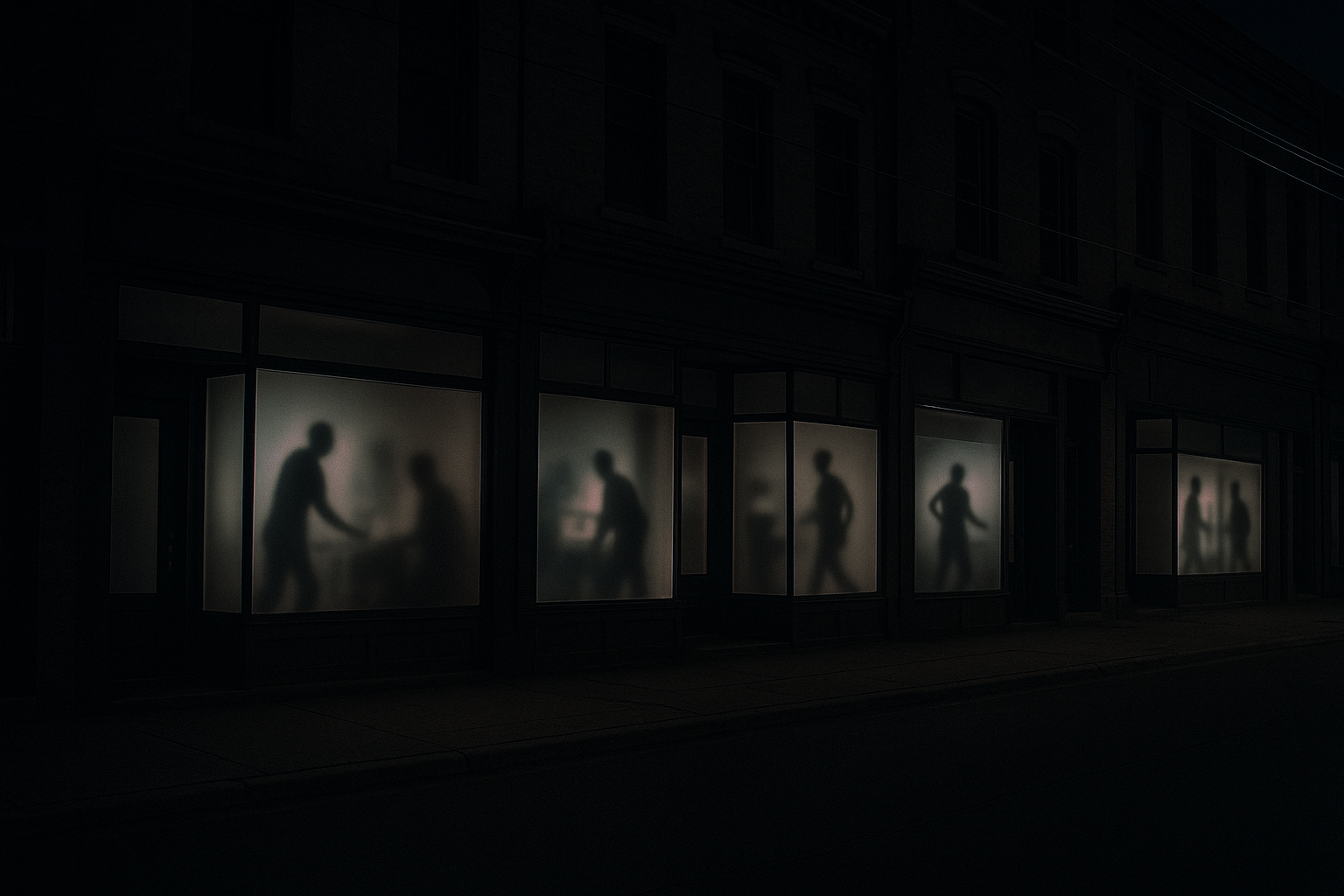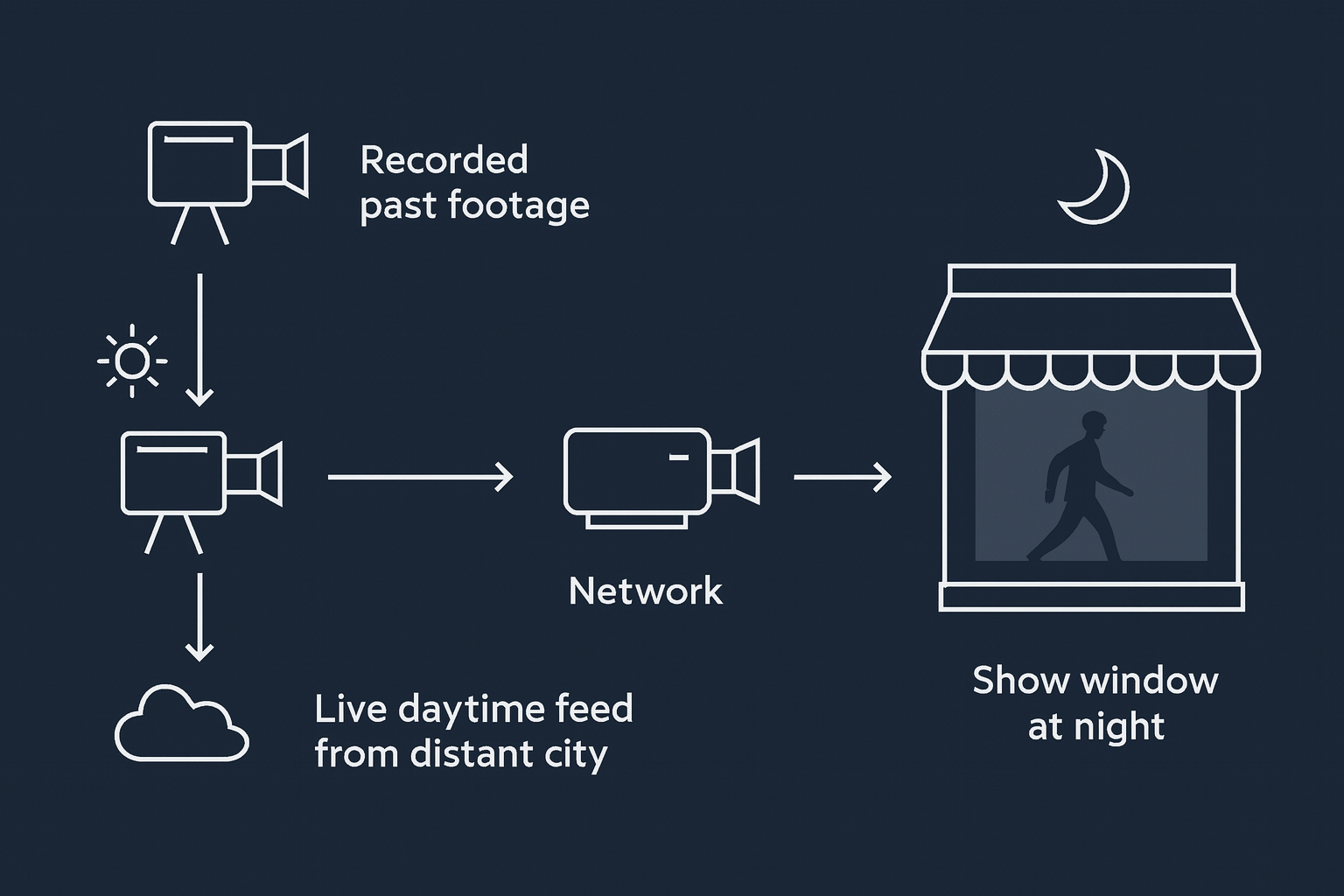At midnight, long after closing time, the storefront falls completely silent. The lights are out, the doors are locked, and yet—behind the glass of the show window—multiple human silhouettes begin to move. In the darkness, their shifting outlines create the faint illusion that someone is still there: arranging items, browsing the shelves, pausing to look out onto the street. There is no clear face, no identifiable figure, only the subtle trace of “someone” passing through, like an afterimage that refuses to fade.

This artwork invites the viewer to remember the life that once filled this place: the chatter of customers, the rhythm of opening and closing, the everyday energy that used to flow so naturally that no one thought it might disappear. By staging the quiet presence of anonymous shadows in an empty store, the piece calls attention to the fragility of that liveliness and the simple, irreplaceable fact of people being there. The moving silhouettes are not ghosts of specific individuals, but echoes of a shared memory—the memory of a time when the shop, and perhaps the entire street, felt undeniably “alive.”

At the same time, the work is a meditation on loneliness: the loneliness of a city at night when no one is around, and the deeper loneliness of a town that has slowly fallen quiet as people drift away. By making the absence of people so tangible that their presence is suddenly felt again, this experimental artwork asks us to reconsider the value of human warmth, noise, and activity in the urban landscape. It transforms a dark, deserted window into a fragile stage where the past and present coexist for a brief moment, urging us to reflect on what is lost when a place is emptied—and why the everyday presence of others matters more than we realize.
Technically, the work is composed of projected silhouettes: moving human figures mapped precisely onto the interior of the show window so that, from the street, it appears as though people are quietly active just beyond the glass. Through projection mapping, only the outlines and gestures are visible—bodies bending, passing, reaching, pausing—rendered as shadows that never quite resolve into individuals. The physical space remains empty, yet the choreography of light and motion suggests that life continues inside, just out of reach.

These silhouettes can be generated from recorded footage of past activity, or from a live video feed captured in a distant location and transmitted over a network in real time. By linking places across different time zones, the installation allows, for example, the night of one city to be haunted by the midday bustle of another. While the streets outside are dark and quiet, the window glows faintly with the superimposed presence of a daytime elsewhere—a café, an office, a shop full of movement. In this way, the piece does more than simulate human presence: it projects the living rhythm of another place into a silent storefront, letting one city’s lingering light temporarily inhabit the vacancy of another.
